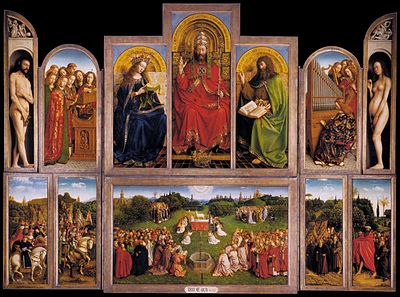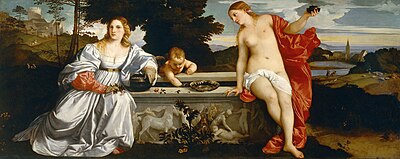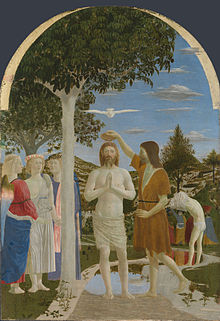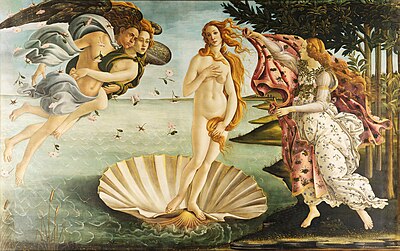
Back Renaissance (kuns) Afrikaans Arte renaixentista AN فن عصر النهضة Arabic فن عصر النهضه ARZ Arte del Renacimientu AST İntibah incəsənəti Azerbaijani Ренесансово изкуство Bulgarian রেনেসাঁ শিল্প Bengali/Bangla Azginivelezh arzel Breton Art del Renaixement Catalan




Renaissance art (1350 – 1620[1]) is the painting, sculpture, and decorative arts of the period of European history known as the Renaissance, which emerged as a distinct style in Italy in about AD 1400, in parallel with developments which occurred in philosophy, literature, music, science, and technology.[2] Renaissance art took as its foundation the art of Classical antiquity, perceived as the noblest of ancient traditions, but transformed that tradition by absorbing recent developments in the art of Northern Europe and by applying contemporary scientific knowledge. Along with Renaissance humanist philosophy, it spread throughout Europe, affecting both artists and their patrons with the development of new techniques and new artistic sensibilities. For art historians, Renaissance art marks the transition of Europe from the medieval period to the Early Modern age.

The body of art, including painting, sculpture, architecture, music and literature identified as "Renaissance art" was primarily produced during the 14th, 15th, and 16th centuries in Europe under the combined influences of an increased awareness of nature, a revival of classical learning, and a more individualistic view of man.[3] Scholars no longer believe that the Renaissance marked an abrupt break with medieval values, as is suggested by the French word renaissance, literally meaning "rebirth". In many parts of Europe, Early Renaissance art was created in parallel with Late Medieval art.
- ^ "Renaissance". encyclopedia.com. June 18, 2018.
- ^ "Renaissance art | Definition, Characteristics, Style, Examples, & Facts | Britannica". www.britannica.com. 2024-05-06. Retrieved 2024-05-23.
- ^ "Renaissance art | Definition, Characteristics, Style, Examples, & Facts | Britannica". www.britannica.com. 2024-05-06. Retrieved 2024-05-23.